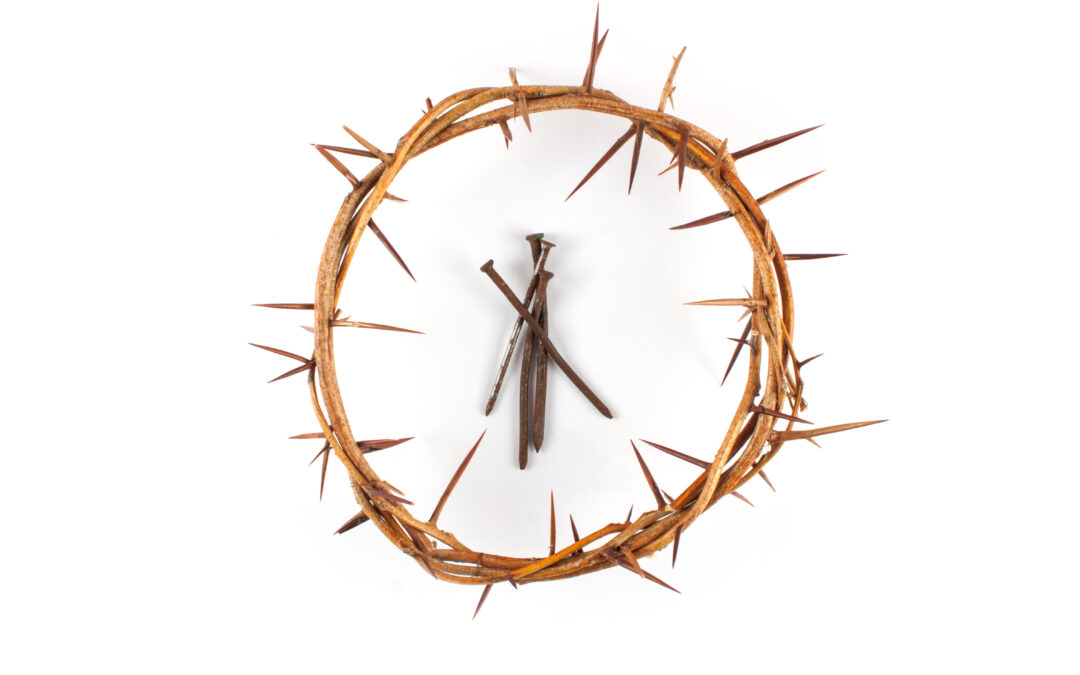On Sunday morning (9 April) lots of Christian people will get out of their beds early, and join with others for a happy and enthusiastic Easter morning celebration of the resurrection of Jesus Christ from the grip of death and hell. (And if you want to be really precise – sunrise will be at 6.37 on Sunday morning here in Northern Ireland).
Those open-air services will herald the joyous conclusion to a week of both high drama and great pain. As I have read again the gospel accounts of what happened on that first ‘Holy Week’, I have been very struck by the huge range of emotions that emerge at every twist and turn of every day and every event.
At the beginning of the week, Palm Sunday reminded us of the scenes of great public expectation and high drama as Christ came into Jerusalem riding, not on a chariot or magnificent horse – but on a donkey. Populist and transient praise is not a new phenomenon.
Then at the Passover meal with his disciples, we read that Jesus was “troubled in spirit” (John 13.21), knowing that he was about to be betrayed. Shortly afterwards we read of Peter’s rash promise: “I
will lay down my life for you.” and the response of Jesus… “I tell you, before the rooster crows, you will disown me three times!”
He then comforts his disciples with words that have echoed down the centuries: “Do not let your hearts be troubled. You believe in God; believe also in me.” (John 14.1) Shortly afterwards he acknowledges that they were “filled with grief” as he told them of his imminent departure.
Matthew 26 is drenched in sadness:
Then Jesus went with his disciples to a place called Gethsemane, and he said to them, “Sit here while I go over there and pray.” He took Peter and the two sons of Zebedee along with him, and he began to be sorrowful and troubled. Then he said to them, “My soul is overwhelmed with sorrow to the point of death. Stay here and keep watch with me.”
But they couldn’t stay awake with him.
And of course, there was the famous incident in the garden of Gethsemane where we see Peter’s impetuosity in full flow: John tells us that he “had a sword, drew it and struck the high priest’s servant, cutting off his right ear”, only to be rebuked by Jesus himself, who healed the ear on the spot! (John 18.10-11).
Peter followed this up with bitter tears as the cock crowed after he had denied his Lord three times. And even as those denials accumulated, we read that one of the officials nearby slapped Jesus in the face (John 18.22). Assault was normal.
And as we approach Good Friday, we too cannot but be filled with deep emotions as we reflect quietly on the trial and crucifixion of Christ which unfolded in all their horror.
I think it is very important that we appreciate as best we can the intense human trauma of what happened as God’s plan of salvation came to its climax. We do not only celebrate the significance of the facts of Easter, nor their significance for eternity. We see God, in Christ, sharing the deepest trauma of human pain to bring that salvation to us. That is why it is not only so appropriate to celebrate the resurrection on Sunday – but also to celebrate it all year round. The cost was huge, in every way. Let’s never forget that.
Very Rev Dr Norman Hamilton is a retired Presbyterian minister, former Moderator of the General Assembly, and Chair of Contemporary Christianity.
Please note that the statements and views expressed in this article are those of the author and do not necessarily represent those of Contemporary Christianity.


Recent Comments